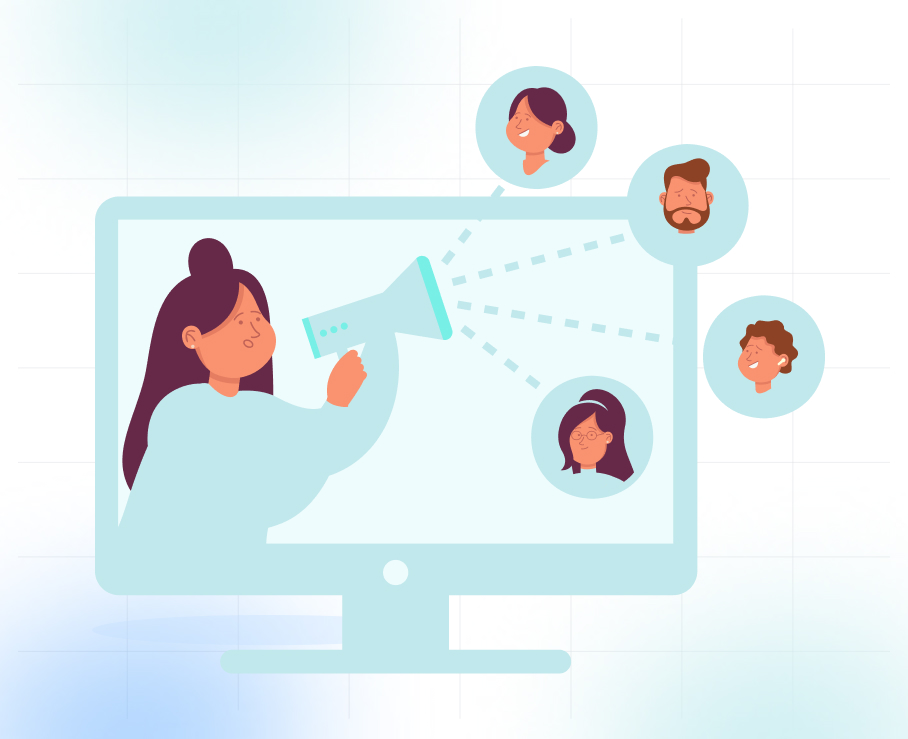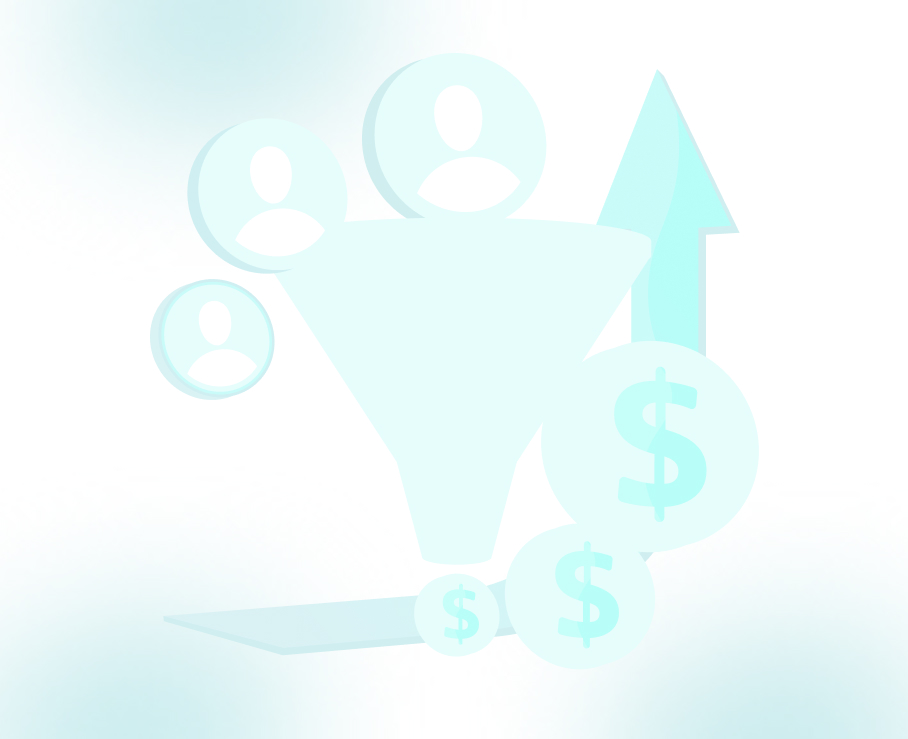
Inbound vs Outbound Marketing: Key Differences Explained

For sales and marketing teams, especially in high-touch industries such as MSPs, staffing, or tech, the real challenge isn't just filling the pipeline. It's doing so in a way that drives quality conversations. That’s where the inbound vs outbound debate matters.
Inbound marketing attracts leads through helpful, relevant content and fosters trust over time. Outbound marketing takes a more direct approach, reaching out to carefully selected prospects with targeted messaging. Both can fuel successful email campaigns, but they work differently and serve different goals.
In this guide, we’ll break down how inbound and outbound marketing differ, how they can power smarter email strategies, and how combining both can drive better lead quality and conversion.
What is Inbound Marketing?

Inbound marketing is a strategy that draws potential customers to your business by offering valuable content and personalized experiences. Unlike traditional methods that push messages out, this approach encourages individuals to engage with your brand on their own terms.
Attracts Through Valuable Content
Start by creating content that addresses the specific needs and interests of your target audience. This can include blog posts, case studies, and social media updates. By focusing on topics that resonate with your audience, you position your brand as a helpful resource. Optimizing this content for search engines ensures that it's discoverable when potential customers seek information about your offerings.
Engages with Personalized Interactions
Once you've attracted visitors, engage them by providing solutions tailored to their challenges. This might involve offering detailed guides, product demonstrations, or personalized recommendations. The goal is to build trust and demonstrate that your business understands and can address their needs.
Builds Lasting Relationships
After the initial engagement, continue to nurture the relationship by offering ongoing support and valuable information. This could be through regular newsletters, customer success stories, or exclusive insights. By consistently providing value, you encourage repeat interactions and foster loyalty.
Inbound marketing emphasizes creating meaningful connections with your audience. By focusing on their needs and providing relevant content, you attract potential customers and build lasting relationships that can lead to sustained business growth.
Understanding inbound marketing examples helps illustrate how businesses engage prospects through targeted content and channels.
What are the Examples of Inbound Marketing Tactics?

Inbound marketing tactics focus on drawing customers to your business by offering valuable content and personalized experiences. Unlike outbound methods that push messages out, inbound strategies encourage individuals to engage with your brand on their terms.
1. Send Email Marketing Campaigns
Email marketing is a powerful inbound tactic to turn interest into intent. Beyond just newsletters, timely and personalized emails, like onboarding journeys, product education, and re-engagement drips, help guide leads through the funnel.
2. Email Newsletters
Sending regular newsletters keeps your audience updated on new content, products, or promotions. Personalized emails that cater to subscribers' interests can increase engagement and drive traffic to your website.
3. Content Marketing
Creating informative and engaging content is a cornerstone of inbound marketing. This includes blog posts, eBooks, and infographics that address your target audience's needs and interests. By providing solutions to common problems or insights into industry trends, you position your brand as a helpful resource.
4. Social Media Marketing
Engaging with audiences on platforms like Facebook, Instagram, and Twitter allows you to share content, interact with followers, and build community. Regular posts, stories, and live sessions can keep your audience informed and interested in your brand.
5. Video Marketing
Creating videos that explain your products, share customer testimonials, or provide educational content can capture attention and convey information. Platforms like YouTube or embedded website videos can enhance user experience and engagement.
Each inbound channel plays a unique role, from sparking awareness to deepening trust over time. But email remains the only owned channel that lets you consistently engage leads 1:1 at scale. When aligned with content and lifecycle triggers, it becomes a quiet workhorse driving conversion. The key is timing, context, and a message that meets the lead where they are.
What are the Benefits of Inbound Marketing?

Inbound marketing offers a strategic approach to attracting and engaging potential customers by providing valuable content tailored to their interests. Unlike traditional outbound methods that push messages to a broad audience, inbound marketing draws individuals in, fostering a more personalized connection.
1. Cost Efficiency
Inbound marketing often requires a lower financial investment compared to traditional advertising methods. Creating content that resonates with your target audience can reduce expenses associated with paid advertising campaigns. This approach allows for a more sustainable allocation of marketing resources.
2. Attraction of Interested Leads
By addressing your audience's specific needs and questions, inbound marketing attracts individuals who are actively seeking solutions. This results in leads who are more likely to engage with your offerings, as they have already shown interest in the topics you cover.
3. Building Trust and Credibility
Providing consistent, informative content helps establish your brand as a reliable source of information. This ongoing engagement builds trust with your audience, making them more comfortable with the idea of doing business with you.
4. Clear Insights from User Behavior
You can track how people interact with your content, which pages they visit, how long they stay, and what they click on. These insights help you see what’s working and what isn’t, so you can make smarter decisions to improve how visitors move through your site and take action.
5. Sustainable Growth
Content created for inbound marketing continues to attract and engage audiences over time. Unlike time-bound advertising campaigns, evergreen content can generate traffic and leads long after its initial publication, contributing to sustained business growth.
6. Improved Customer Experience
Inbound marketing aligns with the way modern consumers prefer to interact with brands. By allowing potential customers to explore your content at their own pace, you provide a more comfortable and user-friendly experience, which can lead to higher satisfaction and loyalty.
Embracing inbound marketing strategies can lead to more meaningful interactions with your audience, promoting relationships that contribute to long-term success.
Like any approach, inbound marketing has its strengths and limitations, which we’ll outline here to give a balanced view.
Pros and Cons of Inbound Marketing
Inbound marketing offers a strategic approach to attracting potential customers by providing valuable content tailored to their interests. However, like any marketing strategy, it has its advantages and challenges.
Inbound marketing can be a powerful tool for building lasting relationships with your audience. However, it's important to consider the resources and time required to maintain a successful strategy. You can determine if inbound marketing aligns with your business goals and capabilities by weighing these pros and cons.
Now, let’s turn to outbound marketing, an approach that relies on direct, broad-reaching techniques to capture attention quickly.
Read: Short on BUDGET to keep a Full-time Inside Sales Expert? Try These Solutions
What is Outbound Marketing?

Outbound marketing involves initiating contact with potential customers through various channels, aiming to promote products or services. Unlike inbound marketing, which attracts customers through content and engagement, outbound marketing pushes messages to a broad audience, regardless of their interest or intent.
1. Traditional Advertising Channels
Outbound marketing utilizes traditional media platforms, including television commercials, radio spots, print advertisements in newspapers and magazines, direct mail campaigns, and billboards. These methods aim to capture the attention of a wide audience by interrupting their current activities with promotional messages.
2. Direct Outreach Methods
This approach includes direct outreach techniques like targeted email campaigns and LinkedIn outreach. The goal is to proactively reach potential customers who may not be actively seeking the product or service offered.
3. Immediate Awareness Generation
Outbound marketing strategies are designed to generate immediate awareness and prompt action. By broadcasting messages to a broad audience, businesses aim to quickly inform potential customers about their offerings, which can be particularly useful for new product launches or time-sensitive promotions.
4. One-Way Communication
Outbound marketing communication is typically one-directional, with the business delivering messages without expecting direct feedback. This contrasts with inbound marketing, where two-way interactions are encouraged to build relationships with customers.
While outbound marketing can reach a large audience quickly, it often requires substantial investment and may not always engage the audience as personally as inbound methods.
Examining outbound examples helps clarify how this traditional marketing style reaches large audiences through various channels.
What are the Examples of Outbound Marketing Tactics?

Outbound marketing involves proactively reaching out to potential customers to promote your products or services. While traditional tactics often included calls and print ads, today, email marketing stands as a focused and high-performing outbound channel. Here are some key email-centric outbound tactics that drive results:
Targeted Email Campaigns
Targeted campaigns allow you to segment your audience and send tailored emails based on industry, job role, behavior, or buying stage. Whether you're introducing a new service or offering a personalized incentive, these campaigns help spark interest in the right inboxes.
Cold Outreach for Appointment Setting
Cold outreach emails, when written with relevance and clarity, are a powerful way to open doors. These emails focus on booking discovery calls or demos by highlighting value and offering specific time slots, turning curiosity into conversations without the need for intrusive phone calls.
Drip Email Sequences
Drip campaigns send a series of automated emails over time to nurture leads. This approach keeps your brand top-of-mind, educates potential clients, and moves them closer to a decision, whether it's downloading a resource, signing up for a trial, or scheduling a meeting.
Re-engagement Campaigns
Not every lead converts right away. Re-engagement emails are designed to revive interest among cold or inactive contacts. A thoughtful nudge—perhaps a new offer, relevant content, or simply checking in—can bring dormant leads back into the pipeline.
Behavior-Triggered Outreach
Emails triggered by user behavior (e.g., viewing a pricing page, clicking a CTA, or attending a webinar) allow you to follow up at the right moment. These timely emails can prompt the next step, such as setting up a call or requesting a proposal.
List Building with Intent-Based Targeting
A strong outbound email strategy begins with a quality list. Using data enrichment, firmographic filters, and buying intent signals helps you identify the right prospects and tailor outreach to resonate, making every email more relevant and impactful.
How This Looks in Practice:
A managed IT services provider based in West Chester, Ohio, approached TLM (The Lead Market) after facing consistent challenges with lead generation. Despite investing heavily in their growth, particularly during the COVID period, their marketing efforts were falling short. Cold calling, direct mail campaigns, and even self-managed email marketing using purchased lists failed to generate meaningful results. The quality of leads was poor, conversion rates were negligible, and their burn rate was steadily increasing.
They were looking not just for visibility, but for qualified opportunities that could translate into long-term clients.
Focused, End-to-End Email Marketing
We partnered with the MSP to implement a structured outbound strategy built entirely around targeted email campaigns. Here’s how we approached it:
- High-Quality Prospecting: Using our automated scraping tools and manual verification process, we built a list of contacts that matched their ideal client profile. This ensured each campaign reached the right decision-makers in the right industries.
- Tailored Email Sequences: Instead of generic outreach, we developed email campaigns that directly addressed the pain points and priorities of MSP prospects. The tone was professional, the messaging value-driven, and every email was designed to initiate meaningful engagement.
- Lead Handover & Appointment Setting: All warm responses were introduced to the client promptly, and high-interest prospects were scheduled directly onto their calendar. This allowed the MSP to focus solely on conversations with decision-ready leads.
The Outcome
Within three months, the MSP closed a $9,000/month contract with a design firm in need of specialized IT solutions. Following this success, they appointed us as their exclusive outbound marketing partner.
- 95% of their sales-qualified leads now originate from our email campaigns
- Their annual investment of $10,000–$12,000 has resulted in a 50x return on revenue
- They have since entered the million-dollar revenue bracket and are actively expanding through acquisitions of smaller MSPs
By refining their outreach to one proven channel and executing it with precision, the client was able to convert stagnant marketing spend into scalable, recurring revenue.
At its best, outbound marketing isn’t about interruption. It’s about intelligent outreach. And with the right email strategy, it’s possible to connect, nurture, and convert without ever picking up the phone.
What are the Benefits of Outbound Marketing?

Outbound marketing gives businesses the power to take initiative, reaching out instead of waiting to be found. When used strategically, it offers several advantages:.
1. Immediate Results
Outbound marketing can deliver quick outcomes by directly presenting your offerings to potential customers. This approach is particularly useful when you need to generate leads or sales promptly.
2. Broad Audience Reach
Using channels like television, radio, print advertisements, and email allows you to expose your brand to a wide audience. This broad reach can help increase brand recognition and attract new customers who may not have encountered your business otherwise.
3. Control Over Messaging
With outbound marketing, you can craft and deliver specific messages to your target audience. This control ensures that your promotional content aligns with your branding and marketing objectives.
4. Easier Use
Email-based outbound marketing is often quicker and more straightforward to implement than complex inbound strategies. With the right tools and verified contact lists, businesses can launch targeted email campaigns without the ongoing effort required for content creation, SEO, or social media management. This makes it an efficient option for companies seeking a clear and manageable path to lead generation.
5. Complementary to Inbound Marketing
Outbound marketing can work alongside inbound strategies to reinforce your brand message. For instance, a television ad can drive traffic to your website, where inbound content further engages potential customers.
By incorporating outbound marketing into your overall strategy, you can proactively reach potential customers, increase brand visibility, and drive immediate results. When combined thoughtfully with inbound efforts, outbound marketing can contribute to a well-rounded approach that supports your business goals.
Inbound vs Outbound Marketing
You’re likely deciding between inbound and outbound marketing approaches to reach your audience and grow your business. Each method has distinct characteristics that influence how you connect with potential customers.
Choosing between these approaches depends on your goals, resources, and audience habits. Many find combining the two helps cover different stages of the customer journey; outbound attracts immediate attention, while inbound nurtures interest into action.
Selecting the best marketing approach depends on your business objectives, audience, and resources.
Which Type of Marketing is Right For You?
Choosing between inbound and outbound marketing depends on your goals, budget, and audience behavior.
Inbound marketing is ideal for building long-term relationships by sharing valuable content and attracting leads naturally. It works well for educating your audience, growing brand awareness over time, and when your budget supports ongoing content efforts.
Outbound marketing is better for quick outreach, promoting time-sensitive offers, or when you need control over messaging. It’s useful if your audience responds well to direct tactics like ads, calls, or emails, and you have the budget for upfront spending.
A combination of both often works best; outbound grabs attention, while inbound builds trust. Consider your product, sales cycle, and how your audience prefers to engage.
TLM’s services help you do both, generate qualified leads and set appointments through a balanced marketing strategy.
How Can TLM Inside Sales Help You With Inbound vs Outbound Marketing?
TLM’s services are designed to boost your outbound marketing efforts by delivering qualified leads and setting appointments that drive MRR growth. Our proprietary tools and adherence to CAN-SPAM keep outreach focused and compliant. Our approach focuses on precision and relevance to keep your sales pipeline active and productive.
Here’s how we support your business:
- Real-Time Reporting and Insights: Monitor campaign performance to optimize messaging and timing for better responses.
- SQL Generation with Intent-Based Targeting: Identify high-potential prospects through outbound outreach using buying signals and behavioral intent data.
- Custom Outbound Strategies: Reach targeted decision-makers with personalized outreach tailored to your industry and goals.
- Appointment Scheduling with Multi-Touch Email Campaigns: Book meetings through consistent, CAN-SPAM-compliant follow-ups that engage prospects.
TLM blends data-driven segmentation and tailored messaging to increase lead quality and sales opportunities. Our services also include B2B lead generation tailored to your industry, demand generation that supports consistent pipeline growth, and many other services that drive success.
Schedule a meeting with TLM to see how our SQL generation can keep your sales pipeline active and productive.






